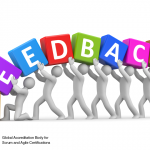A Forbes.com article at the end of 2013 identified thirteen things mentally strong people avoid and the characteristics they have that motivate their aversions. They still have those characteristics today. A comparison of that list with workplace practices makes it clear that mentally strong people would feel at home and energized in a Scrum environment.
Cheryl Conner, the writer of the Forbes’s piece, starts the list of “the things mentally strong individuals don’t do” with “Waste Time Feeling Sorry for Themselves.” She explains that these people “have learned to take responsibility for their actions and outcomes.” A Scrum Master readily sees several points of correlation. The first is the Sprint Review meeting in which the Scrum Team members demonstrate what has been accomplished during the Sprint to the customer, if possible, and the Product Owner, who speaks for the customer. This provides immediate feedback for the Scrum Team member, who will have that good feeling of having one’s “actions and outcomes” affirmed or will learn directly what must be done to make the outcome acceptable. Taking responsibility to improve or remake a product is easier with clear, direct communication. The mentally strong individual appreciates this.
Another point of correlation is self-organization in Scrum. “An important feature of Scrum is self-organization, which allows the individuals who are actually doing the work to estimate and take ownership of tasks,” according to A Guide to the Scrum Body of Knowledge (SBOK™). Having a real voice in estimating—setting real and achievable expectations—and being able to have ownership of what one is doing is freeing to the mentally strong who “have learned to take responsibility for their actions and outcomes.”
Conner also says that the mentally strong do not “shy away from change,” “fear taking calculated risks,” “make the same mistakes over and over,” “resent other people’s success,” nor “expect immediate results.” She explains that “they apply their energy and time in measured doses and they celebrate each milestone and increment of success on the way.” Scrum embraces change, uses risk assessment and mitigation throughout each project’s iterations, employs a retrospect meeting at the end of each Sprint to learn from mistakes and create actionable items for future Sprints, builds strong team camaraderie and moves forward incrementally to develop high-quality results.
The Scrum workplace is obviously a strong fit for the mentally strong worker and the mentally astute company.
[Jim Pruitt, VMEdu staff writer, contributed to this article]









